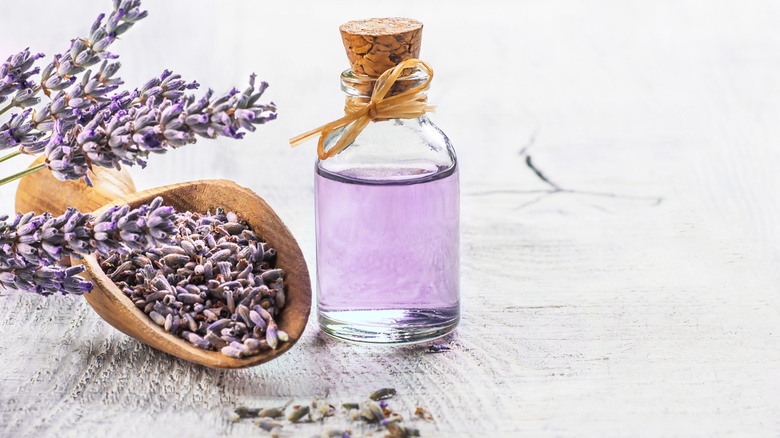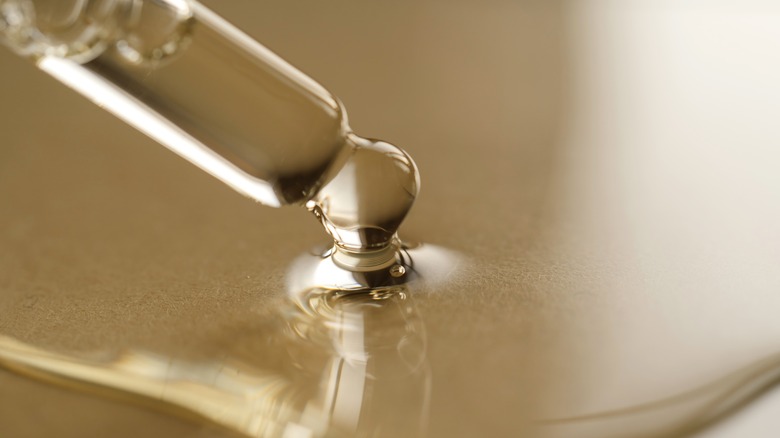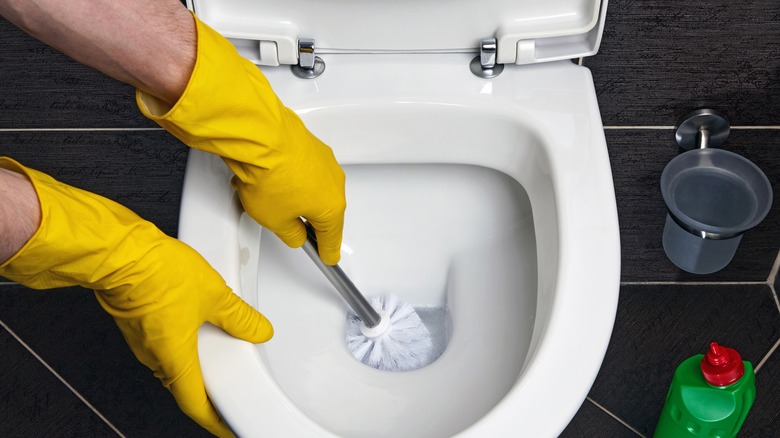Could Essential Oils Be The Answer To Solving Your Smelly Toilet Problems?
Our toilets face the brunt of our bathroom use and can grow increasingly smelly over time as a result. Factors like harbored mold, bacteria, clogged drains and pipes, and a cracked toilet bowl can all play a role in them emitting an undesirable scent. Thankfully, it doesn't have to be this way; essential oils are popular among home improvement enthusiasts who want to keep their toilet in tip-top shape. Examples like eucalyptus, lavender, and lemon are all naturally sourced and give off a strong and pleasant smell that gradually spreads throughout the room. So, if your bathroom isn't smelling the way you'd like, consider using some common essential oils.
Besides being a convenient, affordable, and simple solution for unpleasant odors, there are several other reasons to opt for essential oils instead of for-purpose bathroom fresheners and room sprays, which can be expensive and tend to get used up quickly too. Essential oils simultaneously cover the odor with their fresh scent while also targeting the bacteria that permeate the air. Some essential oils are even created with antiseptic properties that don't just remove smells, but prevent them from reoccurring in the future. Depending on the source and severity of your smelly toilet, the right essential oils could help keep you out of harm's way.
How to use essential oils in your toilet
Using essential oils in the toilet starts with flushing down anything that may be inside the bowl first. Once it's empty, place two or three drops of the essential oil of your choosing — eucalyptus, lavender, and lemon oil are some of the strongest-smelling essential oils. After waiting a few minutes, to allow the product to soak fully in the bowl, use your toilet cleaning brush to scrub around the rim and in the bowl. Some homeowners also recommend placing a few drops of oil inside the cardboard core of your toilet paper roll to keep the smell permeating through the air.
Additionally, if you forget to routinely use essential oils to freshen up your toilet bowl after each use, your roll can hold down the fort in the meantime. However, while using essential oils in your toilet is a relatively safe way to freshen the air, be sure not to drop any into the tank above your toilet itself. Allowing cleaners to enter your toilet tank — whether natural or artificial — can damage the rubber that seals your tank and potentially cause leaks in your toilet. Instead, reserve essential oils and other cleaners exclusively for your toilet bowl before flushing the products down.
How to avoid a smelly toilet in the future
While essential oils are an effective way to get rid of bad toilet odors, it's important to maintain a good hygiene routine so that you're not unexpectedly faced with a smelly toilet. For starters, it's best to clean your toilet bowl often (ideally once a week) using one cup of bleach. If your toilet is harboring any residual stains that may be causing an unpleasant odor, use hydrogen peroxide and a toilet brush to scrub through the grime. Additionally, purchasing a moisture absorber or ventilating the bathroom with a dehumidifier can help fight through some of the moisture that keeps smells in the toilet. But, regardless, frequently cleaning your toilet bowl will help you avoid unpleasant odors in the first place.
Potpourri is another easy way to permeate the air, especially if you're looking for a quick fix. Simply keep a bowl of the classic air freshener above or near the toilet at all times. Natural herbs, which essential oils are notably made from, like mint, rosemary, and cinnamon, are also effective alternatives to help freshen up your bathroom and tackle the odors that your toilet may emit. If you'd rather avoid doing the work manually, an automatic toilet cleaner is another efficient way to clean your toilet with every flush by dispersing a variety of cleaning chemicals through your toilet bowl. Just bear in mind, though, that these fragrance enhancers will have a more chemical tang to them than essential oils.


